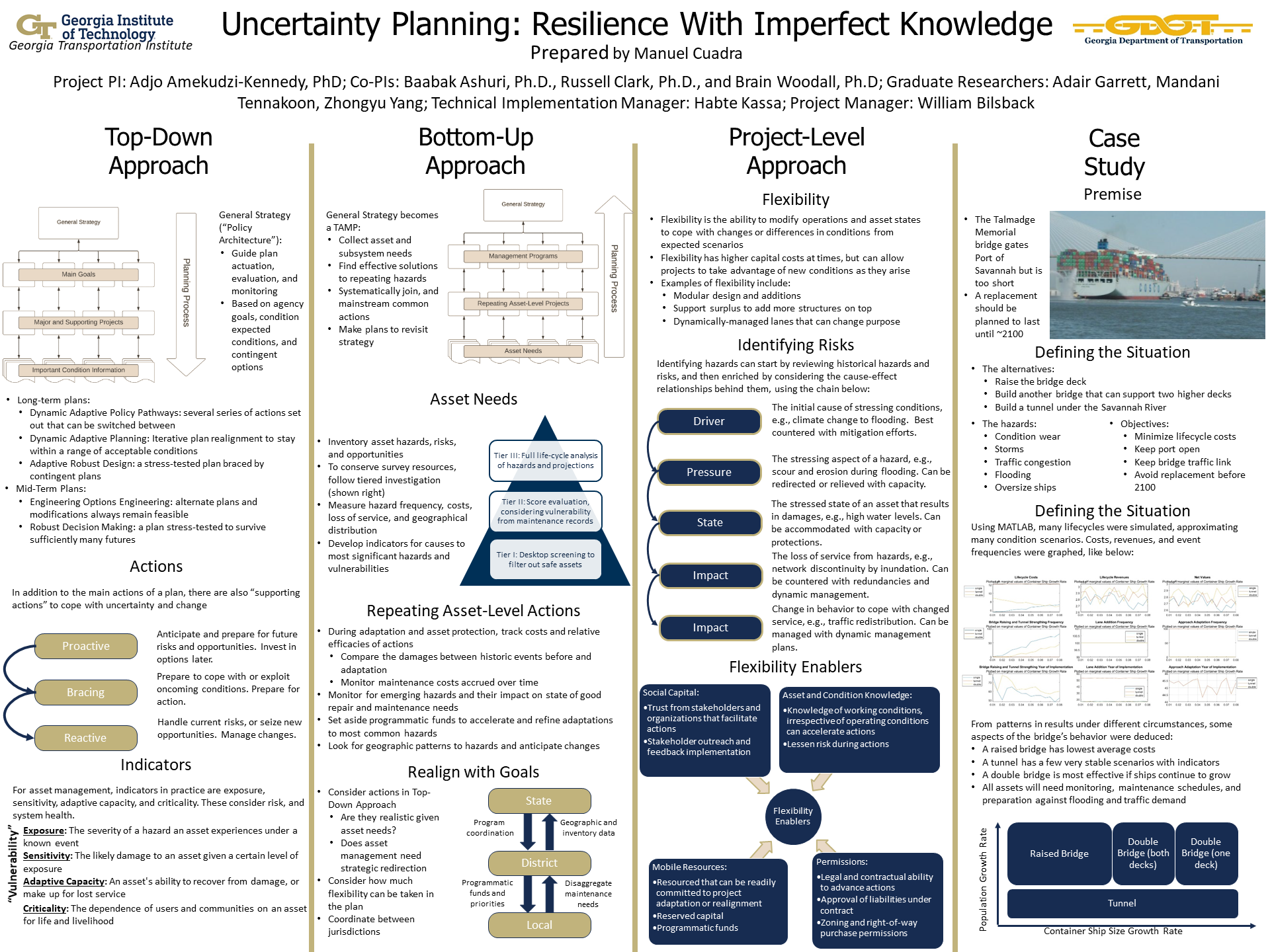INCORPORATING ACCESSIBILITY INTO VULNERABILITY ASSESSMENTS FOR ENHANCED EQUITY AND RESILIENCE
PI: Adjo Amekudzi-Kennedy
Co-PI(s):
Institution(s): Georgia Institute of Technology
Abstract
Transportation systems are key to serving the basic needs of society. These critical systems are impacted by increasing frequency of disasters, aging infrastructure, and changing social demands. Vulnerability assessments examining exposure, sensitivity, and adaptive capacity are factors of transportation resilience that reflect the ability of infrastructure to withstand, adapt to, and respond to disruptions. At the same time, there are basic standards for transportation that are often captured by accessibility measures. These standards are a contributing factor to enhancing community resilience, but they are often considered separately from transportation resilience analysis. Ensuring that accessibility standards are met before implementing other projects can reduce the vulnerability of transportation users and the system at large, thus enhancing long-term system resilience. Applying the principles of negotiated resilience may enable agencies to address more effectively emerging demands and competing priorities for all stakeholders. This research first provides a clear prioritization pathway that accounts for vulnerability and accessibility indicators. From there, we provide an analysis exploring relevant indicators for each of these concepts for the state of Georgia. A stakeholder outreach event and workshop focused on transportation practitioners and emergency managers in Georgia enabled us to validate our analysis and gain more insight into the current state of practice concerning vulnerability assessment and adaptation. This workshop was designed to incorporate and apply emerging theory regarding negotiated resilience. This research develops and demonstrates a framework for conducting future vulnerability assessments that reflect the basic transportation needs of communities in addition to the vulnerability of physical infrastructure.
Please comment below with any statements or questions you may have. Also let GTI if you would be interested webinars or presentations on similar topics.


















